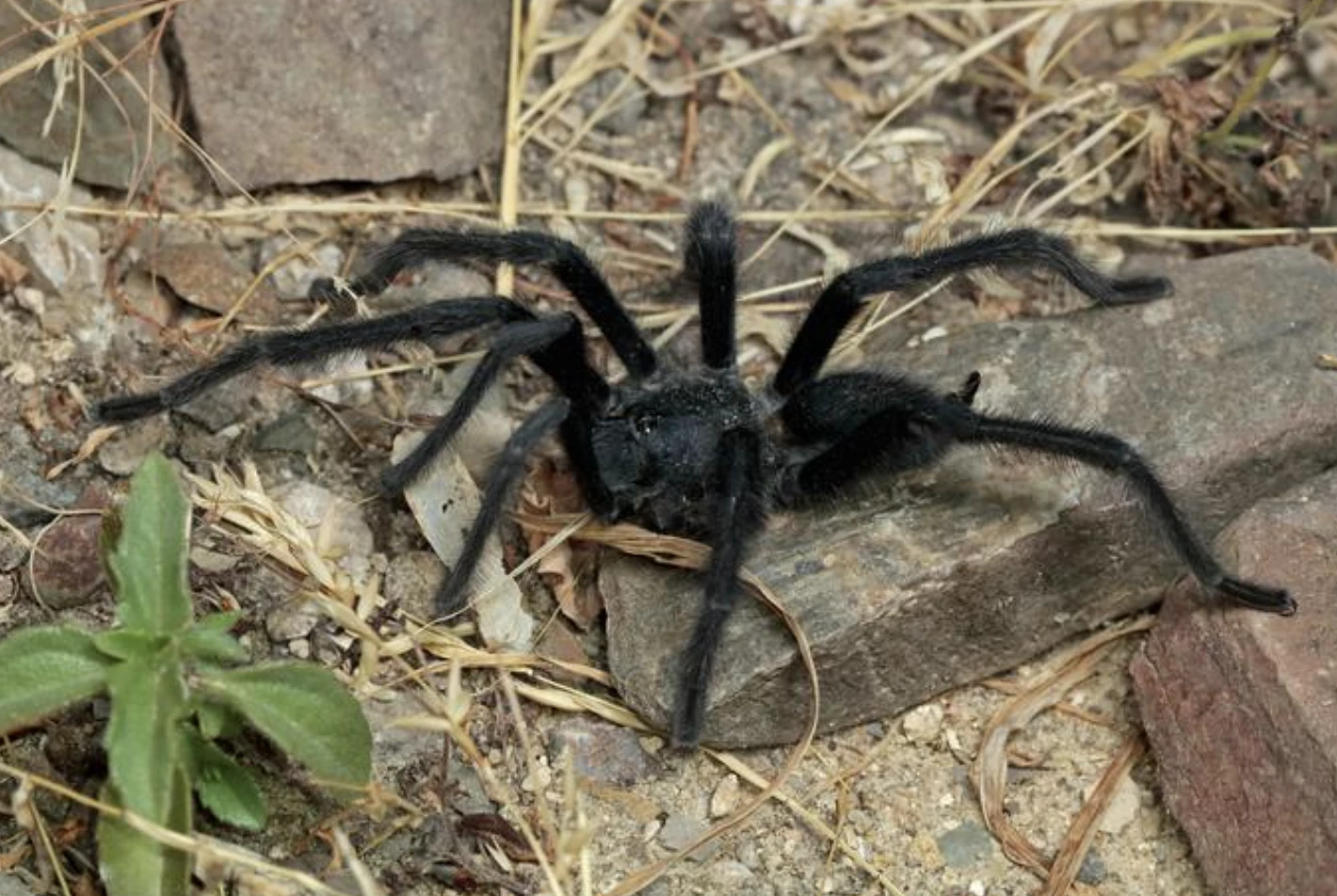Forget flowers and chocolate – in the spider world, courtship survival is the ultimate gift. Scientists have now discovered a new genus of tarantula and the species’ defining feature is a supersized sperm-delivery arm nearly four times the length of their body plate. Researchers believe these enormous palps serve as a “safety buffer,” reducing their risk of being grabbed – or eaten – by notoriously aggressive females while doing the deed.
While researchers from the University of Turku have made an important amendment to taxonomy records, this achievement is somewhat dwarfed by the curious morphology of their prized finds. The team has identified four new species of tarantulas in the Arabian Peninsula and, somewhat fittingly, the Horn of Africa, and their impressive features have warranted the creation of a completely new genus – Satyrex.
“Based on both morphological and molecular data, they are so distinct from their closest relatives that we had to establish an entirely new genus to classify them, and we named it Satyrex,” said lead author Alireza Zamani.
When it comes to genus names accepted for the International Code of Zoological Nomenclature, there’s no strict rule, but historically it’s been common for them to have morphological roots. And Satyrex certainly follows this rule, inspired by Satyr – a Greek mythological part-man, part-beast figure know for his specifically large genitalia – and the Latin word rēx, aka “king.”
“The males of these spiders have the longest palps among all known tarantulas,” explained. Zamani.

Bobby Bok
Us zoologists and evolutionary biologists will be most excited about the reclassification – with one species leaving the genus Monocentropus to join four newly discovered spiders now grouped under Satyrex. There’s S. ferox, S. arabicus, S. somalicus, S. speciosus and S. longimanus.
But what makes them unique is, yes, their gigantic “love arms,” used to transfer sperm from a safe distance. The new genus’ males have these arms, known as palps, that are 2.23-3.85 times longer than their carapace, most likely an adaptation to avoid female cannibalism during mating.
In S. ferox, the largest, with a leg span of about 14 cm (5.51 in), its palp can stretch 5 cm (1.97 in), almost four times longer than the front part of the body (carapace).
“This species is highly defensive,” Zamani said. “At the slightest disturbance, it raises its front legs in a threat posture and produces a loud hissing sound by rubbing specialized hairs on the basal segments of the front legs against each other.”
And this defensiveness, the researchers believe, have led to certain evolutionary changes that allow for reproduction at a self-preserving distance.
“We have tentatively suggested that the long palps might allow the male to keep a safer distance during mating and help him avoid being attacked and devoured by the highly aggressive female,” Zamani added.

Bobby Bok
In evolutionary biology, reproductive strategies and adaptations are one of the most important aspects of survival. And female mate choice has driven it. Aside from the battle between pathogens and hosts, it’s perhaps nature’s most enduring and fascinating biological arms race. Female tarantulas are infamously aggressive, so to avoid cannibalism – and mating failure – males have evolved physical means of boosting their odds of passing on their genes.
Recent research has uncovered some fascinating physical and behavioral adaptations, from female frogs pretending to drown to avoid mating with undesirable males, to a beetle with a penis shaped like a bottle opener. Oh, and let’s not forget the bats with enormous heart-shaped genitalia.
And for the Satyrex males, their collective well-endowment has enabled them to keep – quite literally – at arm’s length from aggressive females they approach. In this context, males with the longest sperm-delivering palp are most likely to succeed with insemination, and that lengthy trait appears valuable, as it’s been conserved across all species to varying degrees. While certainly not the case across the animal kingdom, for these male arachnids, their supersized appendages are important as they’re potentially the difference between life and death.
“So yes, at least in tarantula taxonomy, it seems that size really does matter,” confirmed Zamani.
However, you’re unlikely to spot any Satyrex species showing off their impressive packages – they live out of sight, underground, beneath shrubs and rocks, keeping their secret weapons well hidden until they’re needed.
The study was published in the journal ZooKeys.
Source: University of Turku via EurekAlert!
